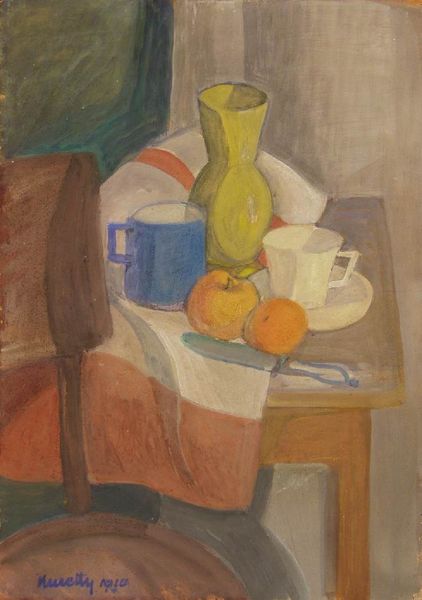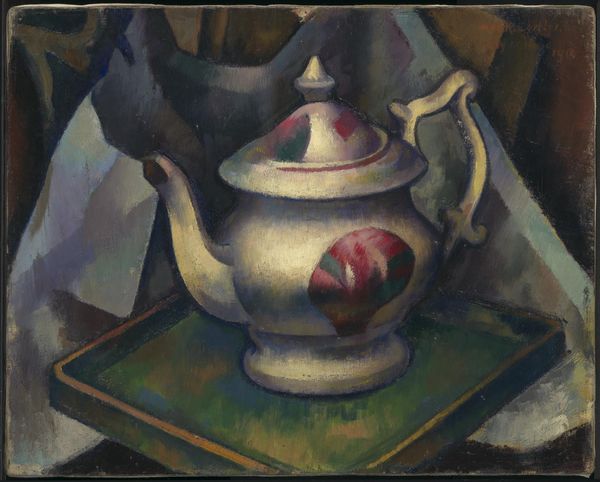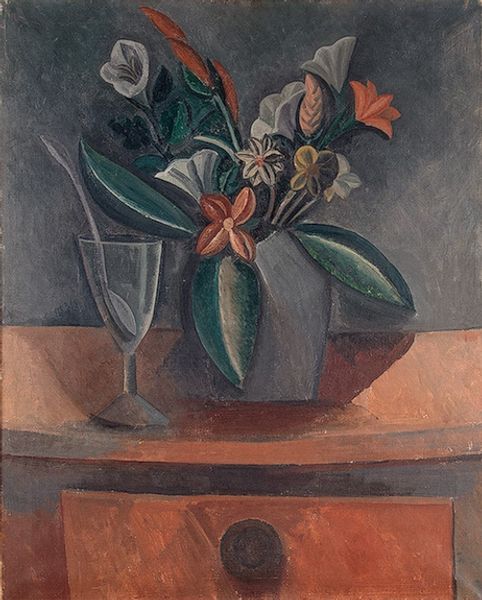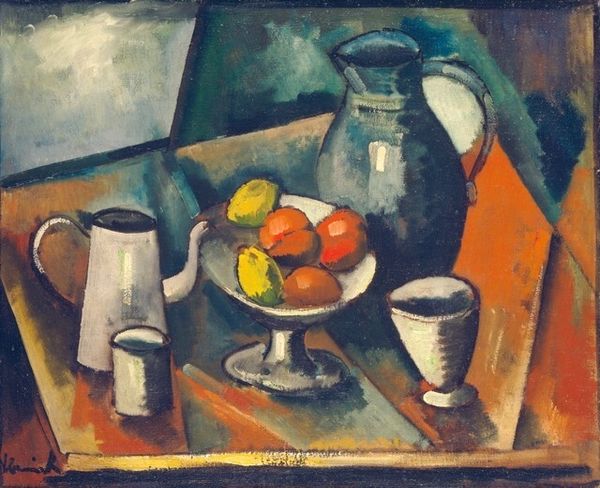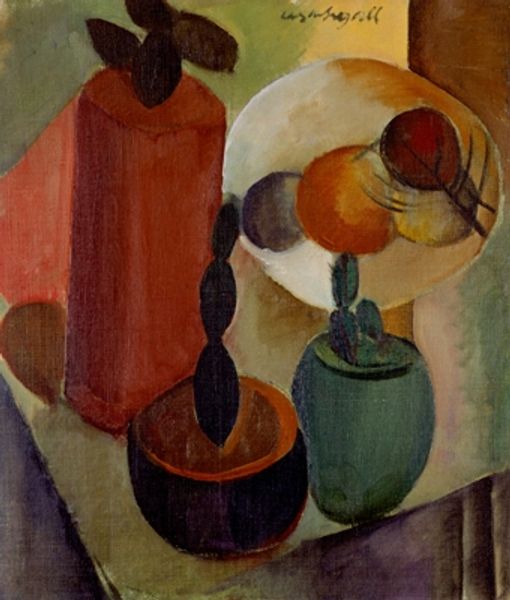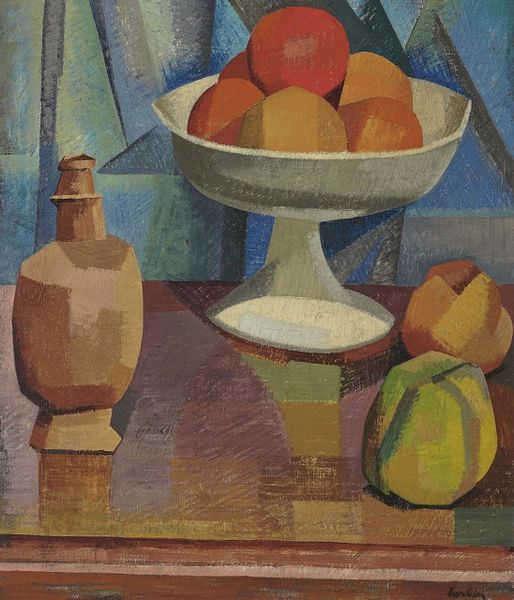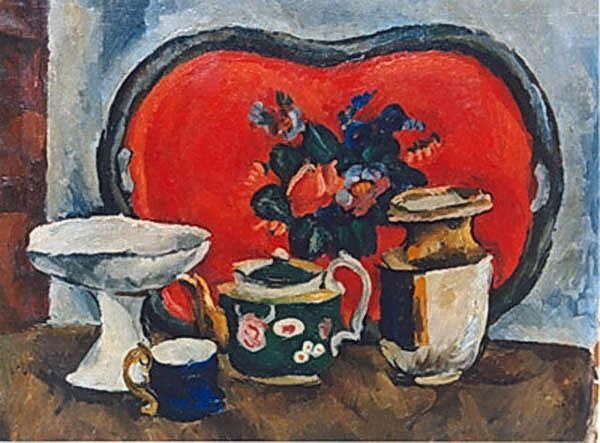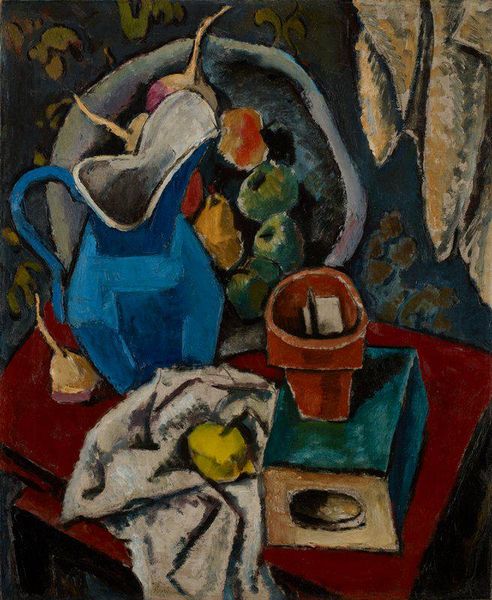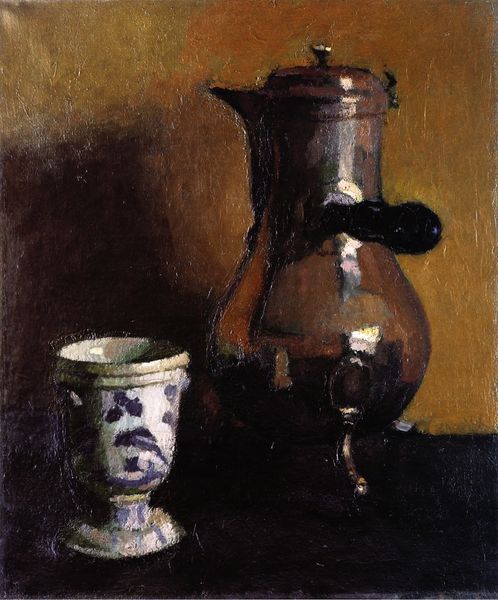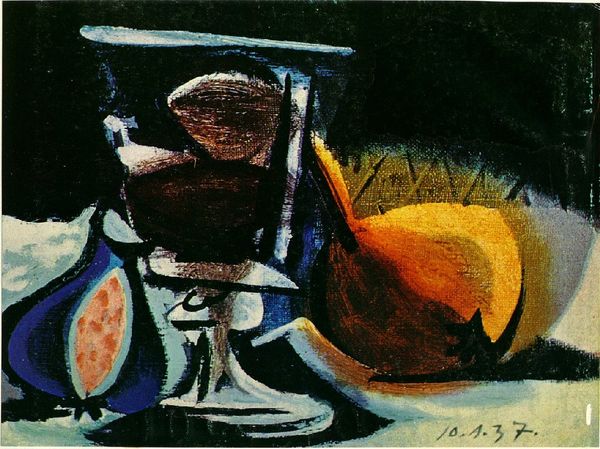
oil-paint
#
cubism
#
oil-paint
#
oil painting
#
modernism
Dimensions: 66 x 50.5 cm
Copyright: Public domain US
Curator: Take a moment to observe this striking painting from 1908 by Pablo Picasso, titled "Pitcher and Bowls," currently housed in the Hermitage Museum. Editor: It has this earthy, muted palette – browns, oranges, grays. Almost like looking at these everyday objects through a dusty window, or a memory. It gives it this somber, contemplative atmosphere. Curator: It’s a very interesting phase in Picasso’s oeuvre. Looking at it through the lens of material studies, you can see him grappling with the representation of form through a limited palette, pushing the boundaries of traditional still life by flattening and fracturing the objects, which we’ll see later bloom into full-blown Cubism. He’s not trying to just capture the appearance of these objects. Editor: Exactly, he is also representing what he knows about them. The institutional shift occurring then was towards abstraction, wasn’t it? Less emphasis on realistic representation, more on the artist’s perception. Also, what’s striking is this interplay of shapes—how he simplifies these vessels, turning them almost into building blocks. How did critics perceive it then? Curator: Early Cubism wasn't met with universal praise initially; viewers and some critics struggled with the perceived distortion. However, a close look reveals his construction of the pictorial space. His process involves building up the surface with visible brushstrokes and layering different planes. The labor, the means of its creation are embedded directly onto the canvas, demanding to be acknowledged, in ways traditional academies frowned upon. Editor: So the shift, in part, was also from valuing virtuosity as seamless illusion towards valuing the record of labor, making the making part of the viewing. Curator: Precisely. What begins to concern Picasso at this juncture is not an illusion, or surface, but process. One may even analyze what these commonplace items mean socially, through labor, or in consumption. He takes those familiar forms and uses them as tools, testing the waters of visual language for social perception, for change. Editor: It really makes you consider the role of galleries and patrons in enabling that exploration of a visual shift. What’s on display has so much to do with societal context and power! The object in this oil painting is not simply still, but has begun traveling somewhere that modernism called. It asks about everything art can be for people. Curator: Absolutely. These humble items of material existence open up an intellectual investigation regarding human life. It's quite the powerful conversation piece. Editor: A piece worth reflecting on, certainly. Thanks!
Comments
No comments
Be the first to comment and join the conversation on the ultimate creative platform.
